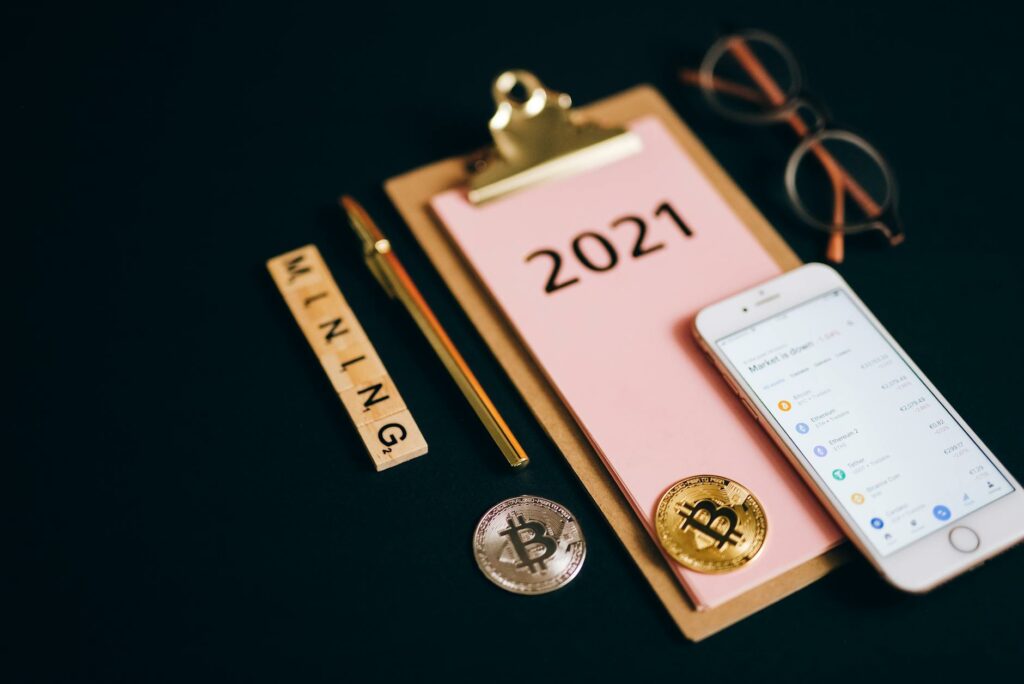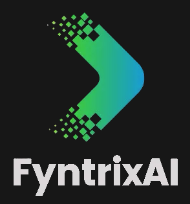Introduction to Bitcoin Mining
Bitcoin mining is a fundamental process that underpins the entire Bitcoin network. To understand the significance of mining, it’s essential to grasp the basics of what it entails and how it operates.
What is Bitcoin Mining?
Bitcoin mining is the process of validating and adding new transactions to the Bitcoin blockchain, a decentralized public ledger that records all Bitcoin transactions. Miners play a crucial role in maintaining the integrity and security of the network.
In essence, miners use specialized hardware and software to solve complex mathematical problems, known as hash functions. By solving these problems, miners validate transactions and create new blocks that are added to the blockchain.
How Does Bitcoin Mining Work?
Bitcoin mining relies on a consensus mechanism called Proof-of-Work (PoW). To mine Bitcoin, miners compete to find a solution to a cryptographic puzzle by repeatedly hashing different combinations of data until they find a solution that meets specific criteria. The first miner to find the correct solution is rewarded with newly minted bitcoins.
The difficulty of the puzzle is adjusted regularly to maintain a consistent mining rate. This ensures that approximately every 10 minutes, a new block is added to the blockchain. As more miners join the network, the difficulty level increases, requiring more computational power to find a solution.
To participate in mining, miners need specialized mining hardware, such as ASICs (Application-Specific Integrated Circuits), which are designed specifically for mining cryptocurrencies like Bitcoin. These devices are significantly more powerful and efficient than consumer-grade computers.
Mining also requires mining software that connects miners to the Bitcoin network and enables them to coordinate their efforts. Miners can choose to mine individually or join mining pools, where they combine their computing power to increase their chances of earning rewards.
By mining Bitcoin, miners not only validate transactions but also contribute to the security and stability of the network. The process of mining ensures the immutability of the blockchain and prevents malicious actors from tampering with the transaction history.
Understanding the basics of Bitcoin mining sets the stage for exploring the role of miners, the mining process itself, as well as the rewards and challenges associated with this integral aspect of the cryptocurrency ecosystem.
The Role of Miners
In the world of Bitcoin, miners play a crucial role in the operation and security of the network. Their responsibilities include securing the Bitcoin network and verifying transactions. Let’s explore these roles in more detail.
Securing the Bitcoin Network
Miners play a vital role in securing the Bitcoin network by ensuring the integrity and immutability of the blockchain. They do this by performing complex mathematical calculations that help validate and confirm transactions. These calculations involve solving cryptographic puzzles, which require significant computational power.
By solving these puzzles, miners add new blocks to the blockchain, creating a permanent and unalterable record of transactions. This decentralized and transparent ledger is a key feature of Bitcoin and helps prevent fraud and double-spending.
Verifying Transactions
Another important role of miners is to verify and validate transactions on the Bitcoin network. When a user initiates a transaction, it is broadcasted to the network and picked up by miners. Miners then verify the legitimacy of the transaction by ensuring that the sender has sufficient funds and that the transaction adheres to the rules of the network.
Once a miner verifies a set of transactions, they include them in a new block that they add to the blockchain. This process adds another layer of security to the network, as each block contains a record of verified transactions that cannot be tampered with.
To incentivize miners to perform these essential tasks, they are rewarded with newly minted bitcoins and transaction fees. The rewards and incentives associated with mining will be discussed further in the next section.
Miners are a fundamental part of the Bitcoin ecosystem. Without them, the network would lack the necessary security measures and trust required for the smooth functioning of transactions. As the network grows, the role of miners continues to be critical in maintaining the integrity and security of the Bitcoin network.
To learn more about the rewards and incentives associated with mining, continue reading the next section on block rewards, transaction fees, and mining profitability.
The Mining Process
Bitcoin mining is the process by which new bitcoins are created and transactions are verified on the blockchain. It involves solving complex mathematical problems using specialized computer hardware and software. Let’s explore the different aspects of the mining process, including mining hardware, mining software, and mining pools.
Mining Hardware
Mining hardware refers to the specialized equipment used to mine bitcoins. These devices are designed to perform the necessary calculations required for mining efficiently. In the early days of bitcoin, miners used regular CPUs (central processing units) and GPUs (graphics processing units) for mining. However, as the difficulty of mining increased, these devices became less efficient.
Today, miners predominantly use ASICs (application-specific integrated circuits) for bitcoin mining. ASICs are specifically designed to perform the calculations required for mining cryptocurrencies, including bitcoin. They offer significantly higher hash rates (the speed at which a mining device operates) and energy efficiency compared to traditional mining hardware.
Mining Software
Mining software is an essential component of the mining process. It connects the mining hardware to the bitcoin network and enables miners to participate in the mining process. Mining software is responsible for controlling the mining hardware, solving complex mathematical problems, and submitting the solutions to the network.
There are several mining software options available, both open-source and commercial. Some popular mining software includes CGMiner, BFGMiner, and EasyMiner. Miners often choose software based on their hardware compatibility, features, and ease of use.
Mining Pools
Mining alone can be a challenging and time-consuming process, especially for individual miners. To increase their chances of earning bitcoin rewards, many miners join mining pools. Mining pools are groups of miners who work together and combine their computing power to mine blocks more efficiently.
In a mining pool, miners contribute their hash power to collectively solve the mathematical problems. When a block is successfully mined, the rewards are distributed among the participants based on their contribution. Joining a mining pool allows miners to receive more frequent payouts, albeit in smaller amounts, compared to mining individually.
Mining pools vary in terms of size, fees, and payout methods. Some popular mining pools include Slush Pool, F2Pool, and Antpool.
By understanding the mining process, including the hardware, software, and the option to join mining pools, miners can optimize their mining operations and increase their chances of earning bitcoin rewards. However, it’s important to consider the associated costs, such as electricity consumption and maintenance, to ensure mining remains profitable. For more information on bitcoin and its various aspects, check out our article on what is bitcoin.
Rewards and Incentives
Bitcoin mining offers rewards and incentives to miners who contribute their computational power to secure the network and validate transactions. These rewards play a vital role in motivating miners to participate in the mining process. Let’s explore the main rewards and incentives associated with bitcoin mining.
Block Rewards
One of the primary rewards for miners is the block reward. When a miner successfully solves a complex mathematical problem and adds a new block to the blockchain, they are rewarded with a certain amount of newly minted bitcoins. This reward serves as an incentive for miners to continue their mining efforts and helps to regulate the supply of bitcoins in circulation.
The block reward started at 50 bitcoins per block when bitcoin was first introduced. However, as part of the bitcoin protocol, this reward is halved approximately every four years in an event known as the “halving.” Currently, the block reward stands at 6.25 bitcoins per block. The halving mechanism ensures that the total supply of bitcoins will not exceed 21 million, making it a scarce digital asset.
Transaction Fees
In addition to the block reward, miners also earn transaction fees for including transactions in the blocks they mine. When users initiate bitcoin transactions, they have the option to include a transaction fee to incentivize miners to prioritize their transactions. Miners typically prioritize transactions with higher fees, as it increases their potential earnings.
Transaction fees serve a dual purpose. They incentivize miners to include transactions in blocks promptly while also acting as a deterrent to spam transactions. As the number of bitcoin transactions increases, transaction fees become an increasingly important part of a miner’s incentive structure.
Mining Profitability
Mining profitability refers to the potential of mining operations to generate profits. It is influenced by various factors, including the cost of mining equipment, electricity expenses, mining difficulty, and the price of bitcoin. Miners need to carefully consider these factors to determine if their mining operations will be profitable.
The profitability of mining can fluctuate based on market conditions. Bitcoin’s price volatility, changes in mining difficulty, and the overall competition among miners all influence mining profitability. Miners must constantly assess their costs and adjust their strategies to ensure they remain profitable in the ever-evolving landscape of bitcoin mining.
Understanding the rewards and incentives associated with bitcoin mining is crucial for miners to make informed decisions regarding their mining operations. Block rewards, transaction fees, and mining profitability all contribute to the overall incentive structure that drives the security and functioning of the bitcoin network. By staying abreast of market trends and optimizing their mining strategies, miners can maximize their potential earnings.
Challenges and Considerations
Bitcoin mining, while offering potential rewards, also presents various challenges and considerations that miners need to address. These challenges include energy consumption, mining difficulty, and environmental impact.
Energy Consumption
Bitcoin mining requires a significant amount of computational power, which in turn demands a substantial amount of electricity. The energy consumption associated with mining is a topic of concern due to its environmental impact and the potential strain it places on energy resources.
The Bitcoin network’s energy consumption has been a subject of debate, with some critics arguing that it is unsustainable. Miners are continuously seeking more energy-efficient ways to mine Bitcoin. It is important for miners to consider the energy efficiency of their mining hardware and explore renewable energy sources to mitigate the environmental impact of their operations.
Mining Difficulty
Bitcoin mining difficulty refers to the level of complexity involved in solving the mathematical equations required to mine new blocks. The Bitcoin network adjusts the mining difficulty approximately every two weeks to maintain a consistent block generation time.
As more miners join the network and the total computational power increases, the mining difficulty also increases. This ensures that new blocks are not mined too quickly. However, the rising mining difficulty can pose a challenge for individual miners, as it requires more computational power and resources to compete effectively.
Miners must stay updated with the latest mining difficulty and adjust their mining strategies accordingly. This may involve upgrading hardware or joining mining pools to increase their chances of successfully solving the mathematical equations and earning rewards.
Environmental Impact
The environmental impact of Bitcoin mining is a concern due to the significant energy consumption associated with the process. The majority of the electricity used for mining is derived from non-renewable sources, such as fossil fuels.
The carbon footprint of Bitcoin mining has led to discussions about the environmental sustainability of the cryptocurrency. Miners and industry stakeholders are exploring ways to reduce the environmental impact by transitioning to renewable energy sources and adopting more energy-efficient mining practices.
Efforts are being made to develop greener mining technologies and promote the use of renewable energy for mining operations. As the industry evolves, miners must consider the environmental implications of their activities and strive towards more sustainable mining practices.
Considering these challenges and finding solutions that balance profitability with sustainability is crucial for the future of Bitcoin mining. Miners and industry participants are continuously working towards addressing these concerns to ensure the long-term viability and success of cryptocurrency mining.
For more information on the latest trends in the Bitcoin market, check out our article on bitcoin market.
The Future of Bitcoin Mining
As the world of cryptocurrencies continues to evolve, the future of bitcoin mining holds several possibilities. Technological advancements, shifts in mining practices, and potential impacts on the cryptocurrency market are all factors that shape the future of this industry.
Technological Advancements
Bitcoin mining has witnessed significant technological advancements over the years. In the early days, mining could be done using standard CPUs, but as the network grew, specialized mining hardware known as ASICs (Application-Specific Integrated Circuits) became the norm. These ASICs are designed specifically for the purpose of mining bitcoins and offer increased efficiency and processing power.
Looking ahead, further advancements in mining hardware are anticipated. This could include the development of more energy-efficient ASICs or the adoption of new technologies that enhance the mining process. These advancements have the potential to increase mining efficiency, reduce costs, and make mining more accessible to a broader range of individuals.
Shifts in Mining Practices
The mining landscape has undergone significant changes since the early days of bitcoin. Initially, individuals could mine bitcoins using their personal computers or even laptops. However, as the mining difficulty increased and the competition intensified, mining became more challenging for individual miners. This led to the emergence of mining pools, where multiple miners combine their computational power to mine blocks and share the rewards.
In the future, we may see further shifts in mining practices. As the mining difficulty continues to rise, mining pools may become more prevalent, allowing miners to pool their resources and increase their chances of earning rewards. Additionally, there may be a shift towards more sustainable and environmentally friendly mining practices, as concerns about the energy consumption of bitcoin mining grow.
Potential Impacts on the Cryptocurrency Market
Bitcoin mining plays a crucial role in the overall cryptocurrency market. The mining process helps secure the network, verify transactions, and maintain the integrity of the blockchain. As the future of bitcoin mining unfolds, it has the potential to impact the broader cryptocurrency market in several ways.
Changes in mining practices, such as the emergence of large-scale mining operations or the increasing concentration of mining power, could potentially influence the decentralization of the bitcoin network. This could raise questions about the security and trustworthiness of the network and may lead to discussions and debates within the cryptocurrency community.
Furthermore, mining profitability is closely tied to the price of bitcoin. As the value of bitcoin fluctuates, so does the potential profitability of mining. Miners must carefully consider market conditions and the costs associated with mining operations to determine the viability of their endeavors. For more information on the current bitcoin market, check out our article on bitcoin price.
In conclusion, the future of bitcoin mining is intertwined with technological advancements, shifts in mining practices, and potential impacts on the cryptocurrency market. As the industry continues to evolve, it is essential for miners and enthusiasts alike to stay informed and adapt to these changes. By understanding the latest developments and trends, individuals can navigate the world of bitcoin mining and unlock the potential of cryptocurrency rewards.






